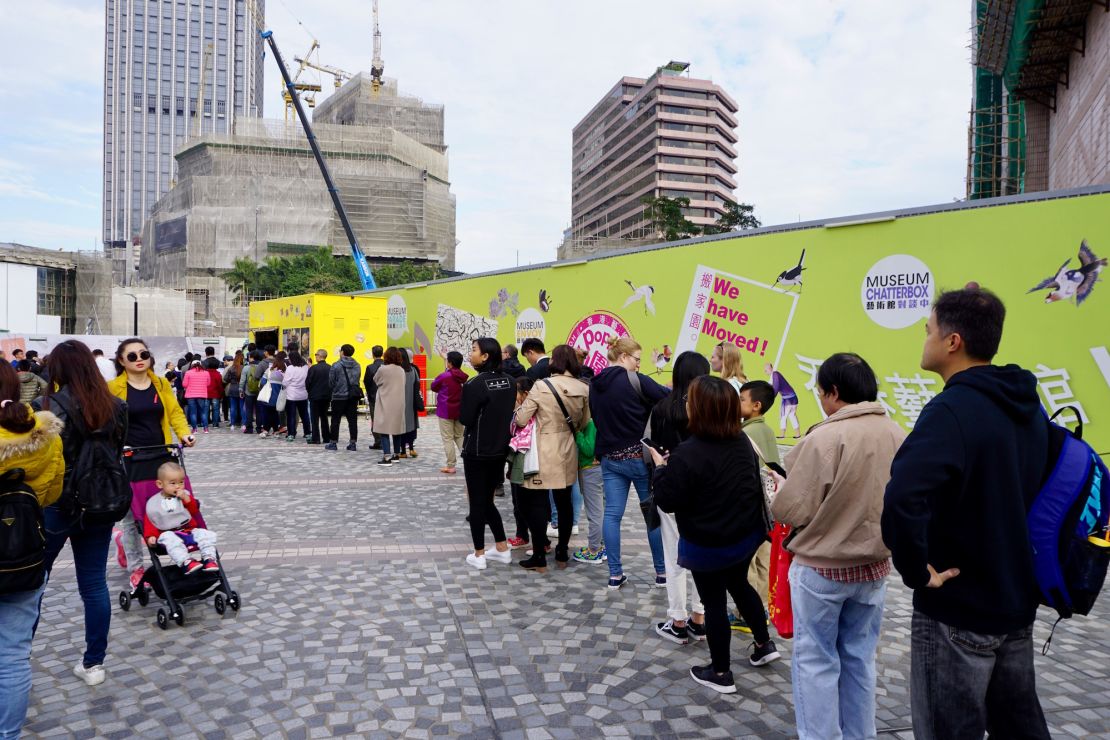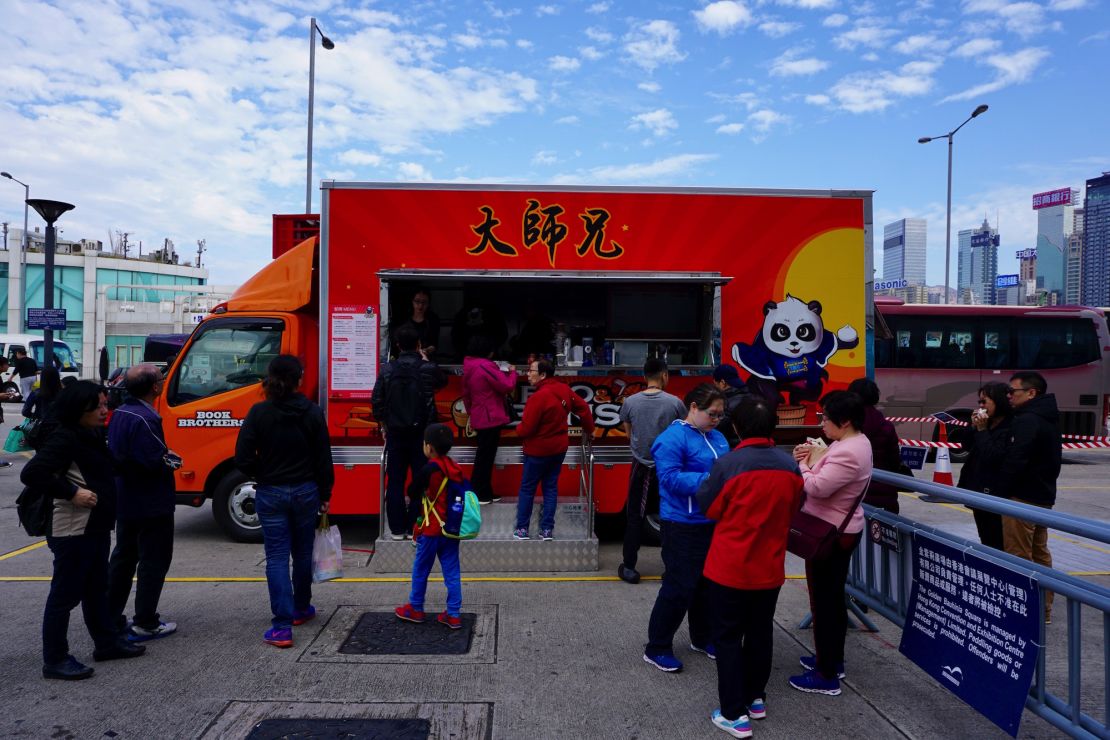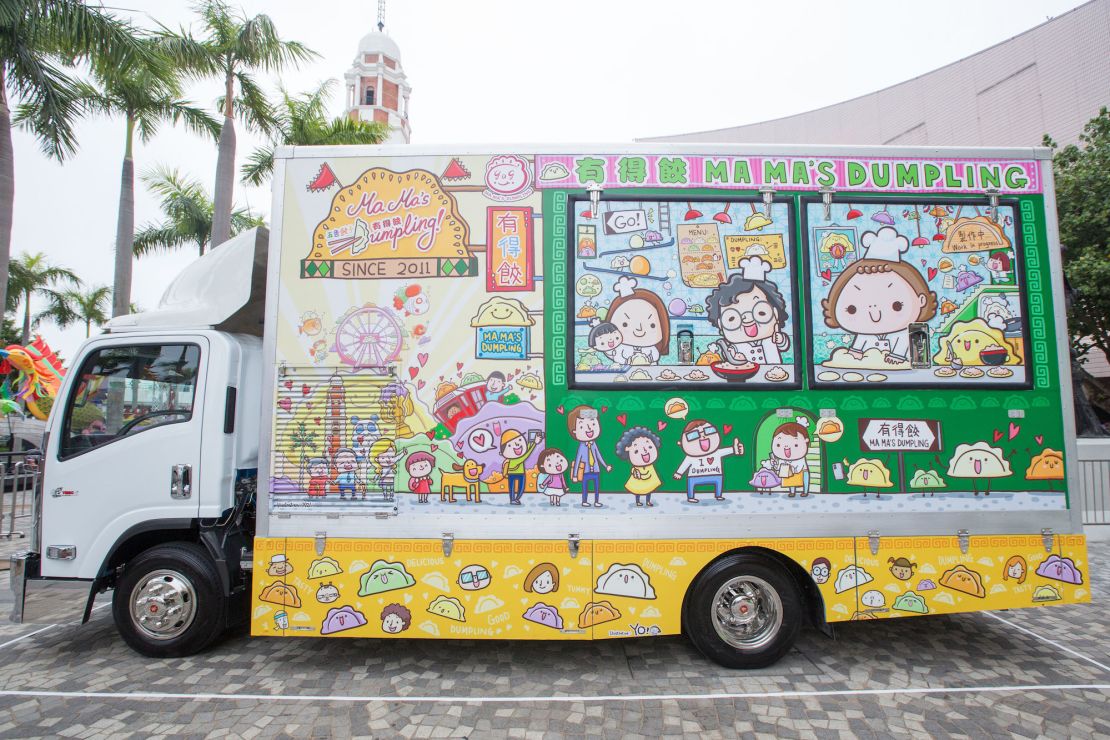Story highlights
16 food trucks are hitting Hong Kong streets as part of a two-year pilot program
Some hope the trucks will revive Hong Kong's street food identity
On a sunny Saturday afternoon in Hong Kong, an 80-person line snaked around the back of Hong Kong’s Space Museum – just a few steps from Victoria Harbour in Tsim Sha Tsui. But these folks weren’t eagerly awaiting an astronomy lesson.
They were queuing up to experience one of Hong Kong’s first food trucks.
Dubbed Pineapple Canteen, the cheerful yellow truck specializes in traditional Hong Kong pineapple buns, named for their bulbous shape and thick crown of sugar. The pastry purveyor was one of three food trucks to launch on February 3, as part of the Tourism Commission’s two-year pilot program.
By the end of March, 13 more foods trucks will join them, setting up in eight assigned tourism destinations around the city, including the Central Harbourfront, Hong Kong Disneyland and Ocean Park.

Ready to roll
Debuting over the Chinese New Year holiday, Pineapple Canteen sold 600 pineapple buns on its first day of operation and an estimated 2,000 by the end of the weekend. In addition to the traditional buns, the popular truck serves contemporary renditions filled with fresh cream and diced pineapple, or stuffed with pork chops.
“I have never operated a food truck before, but I thought it’d be a fun challenge,” says operator Carrie Lam, who also runs a family-owned cha chaan teng diner called Tan Sing Café. “We wanted to change up the traditional pineapple bun recipe, so we used Japanese corn meal to give it a crunchy texture outside, then we added fresh pineapple and cream for a smooth, cool taste inside.”
Just a short ride aboard the historic Star Ferry across Victoria Harbour, Bao & Buns food truck – an extension of Los Angeles-based Book Brothers – prepared American-Chinese fusion bao in Golden Bauhinia Square, near the Wan Chai Exhibition Center.
Stuffed with barbecued duck, chicken, beef or pork, these fluffy white steamed buns drew a curious crowd around the fiery red vehicle.
“I learned about food truck culture in Los Angeles, and I wanted to promote that in Asian countries, starting in Hong Kong,” says Bao & Buns operator Raymond Wong. “After that, we are thinking about expanding into China and Southeast Asia, because food truck culture really doesn’t exist in this region yet.”
Ma Ma’s Dumpling, parked in Wong Tai Sin Square, near the famous namesake temple, was the third food truck to hit the streets over the weekend. About a 20-minute taxi ride northeast of Tsim Sha Tsui, the truck sold Chinese-style dumplings to a steady stream of hungry tourists and passersby.
The essential guide to Kowloon, Hong Kong’s ‘dark’ side
What took them so long?
Before the pilot scheme, food trucks in Hong Kong only made temporary appearances at private events. The city lacked relevant legislation for public food trucks, making it impossible to legally operate one.
By introducing a new Special Purpose Vehicle classification, under the Food Factory License umbrella, the government has set up a designated system for licensing food trucks, though no new applicants will be considered during the two-year pilot.

Gearing up for business
It took nearly a year to bring Hong Kong’s food truck program to fruition.
In March 2016, the Tourism Commission opened the program up for entries – inviting individuals, restaurants and business to propose their ideas. Of 192 applicants, 51 candidates were invited to take part in a cook-off held last July, which was judged by a panel of government representatives, food experts and tourism officials.
In the end, a mix of 16 Chinese and international restaurants were chosen to take part, including Beef & Liberty – a popular burger spot in Hong Kong.
Launching later this month, Beef & Liberty’s truck will serve a signature Notorious PIG – a slow-cooked pork shoulder sandwich – alongside American comfort foods, such as beef hamburgers and mac ‘n’ cheese.
“From day one, venturing into the food truck scene was part of our plan and it currently fits perfectly into my life,” says Uwe Opocensky, executive chef of Beef & Liberty. “Street food plays a huge role in Hong Kong culture and I believe that this program will help bring good food to the streets again.”
A well-known Hong Kong chef, Maureen Loh will also launch her food truck – Mein by Maureen – this February.
A pioneer of molecular gastronomy in Hong Kong, Loh is best known for her eponymous Maureen noodle bar in Wan Chai, where she serves tasting menus, as well as signature lo mein noodles with sous vide toppings – think duck, shrimp, chicken, ribs and foie gras.
“For the food truck, I wanted to create a dish that represents Hong Kong, as I was born and raised here,” says Loh. “That’s why I’m serving my signature noodles (on the truck).”

Behind the steering wheel
In other cities around the world – San Francisco, Paris, London, or New York City – food trucks have popped up organically, offering a whimsical yet practical way for chefs to test-drive new ideas without committing to brick-and-mortar digs.
But in Hong Kong, the food truck program is far from spontaneous. As part of the government plan, Hong Kong’s new food trucks will be stationed at eight designated tourist sites, alternating every two weeks.
A companion app – named HK Food Truck – explains when and where to find each truck. Long lines may indicate that diners don’t mind the choreography, but some residents argue that such programming contradicts the essence of food trucks.
“If you look at the history of food trucks from around the world, there’s this sense of spontaneity that, to me, is vital to its success,” says Kenneth Ip, an architect in Hong Kong. “The idea that you can put Korean bulgogi in a taco to create the perfect Korean-Mexican fusion à la Los Angeles’ Kogi BBQ (food truck) is a result of the Filipino-American owner marrying into a Korean family – and not a business decision conceived in a boardroom by men in suits.”
Despite the program’s conception, Ip hopes the new food trucks will revive a piece of Hong Kong’s identity: street food. The number of Hong Kong street food hawkers plummeted from 50,000 in 1974 to roughly 6,000 in 2016 after the government banned new licenses in the 1970s.
“It would be tremendously exciting if the food trucks could bring that (street food) culture back, in a way, and benefit the culinary start-up scene,” Ip adds. “It is difficult to launch a new restaurant in Hong Kong with the market conditions and high rents. For a young chef with a wacky idea, a food truck could help facilitate the next big culinary sensation.”
Exploring Hong Kong’s history through its food











